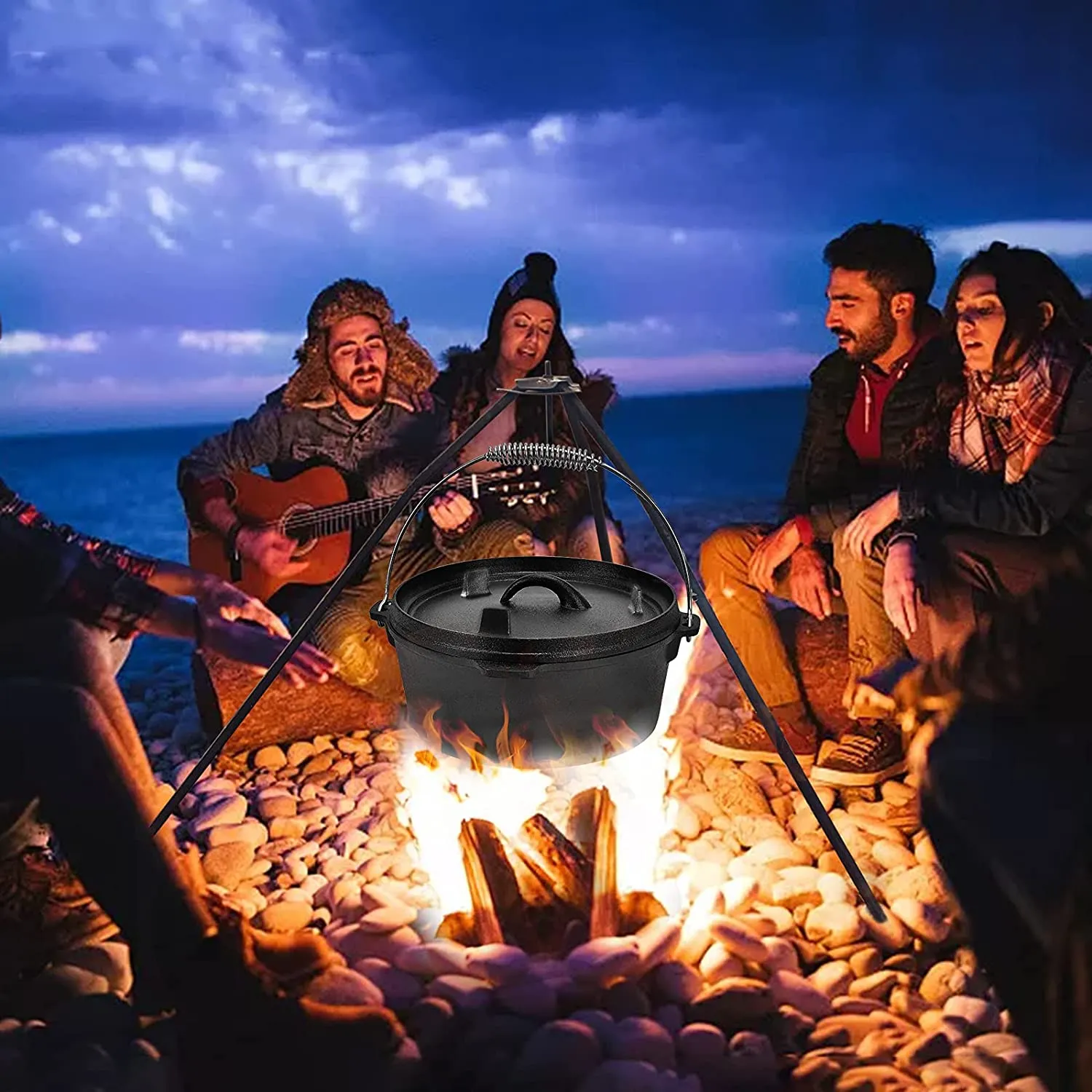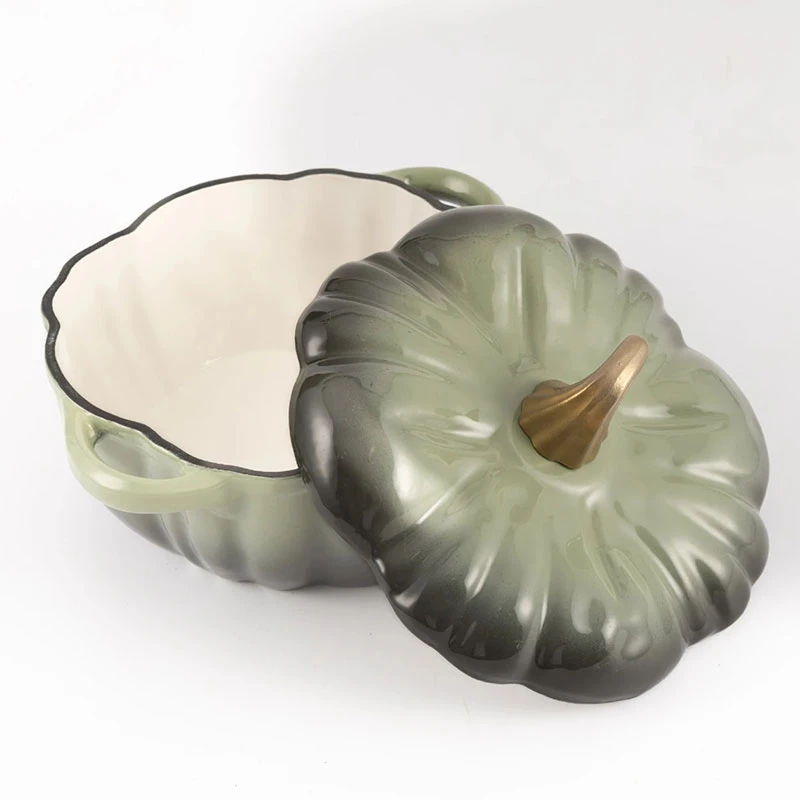
The Benefits of Using a Cast Iron Frying Pan
In the realm of culinary tools, the cast iron frying pan shines as a timeless and adaptable choice. Paired with cast iron skillets and cast iron skillet pans, these kitchen staples present a plethora of advantages that endear them to both professional chefs and home cooks. Whether you're searing succulent steaks, baking artisanal bread, or sauteing vibrant vegetables, a cast iron frying pan has the power to transform your cooking.

Durability of Cast Iron Frying Pan
A prime benefit of the cast iron frying pan lies in its remarkable durability. Forged from solid iron, these pans can endure high temperatures, rough handling, and the passage of time. Unlike other cookware materials that may scratch, warp, or degrade over the years, a well - cared - for cast iron frying pan can serve as a family heirloom. Its resistance to chipping and cracking makes it a reliable option for daily use and challenging cooking endeavors. Whether used on a stovetop, in the oven, or over an open fire, the cast iron frying pan stands as a steadfast kitchen ally.
Heat Retention of Cast Iron Skillet
Cast iron skillets are renowned for their superior heat retention, a crucial factor in achieving consistent and delectable culinary results. Once heated, they maintain heat effectively, ensuring uniform cooking from all angles. This quality is especially valuable when searing meats, as the skillet's ability to retain heat creates a perfect crust while keeping the interior tender. When baking with a cast iron skillet, the even heat distribution yields beautifully golden - brown, evenly cooked baked goods. The slow release of heat also enables precise temperature control, minimizing the risk of overcooking or undercooking.
Versatility of Cast Iron Skillet Pan
I cast iron skillet pan offers unmatched versatility in the kitchen. It can be employed for a wide array of cooking techniques, including frying, sautéing, roasting, baking, and broiling. You can initiate a dish on the stovetop and seamlessly transfer it to the oven without the need to switch pans. For instance, browning chicken in a cast iron skillet pan on the stovetop and finishing it in the oven results in a crispy, flavorful masterpiece. Additionally, these pans are perfect for crafting one - pot meals, simplifying cleanup and reducing the number of dishes to wash.
Health Perks of Cast Iron Frying Pan
Using a cast iron frying pan comes with notable health benefits. As food cooks in the pan, trace amounts of iron are released, which can help boost iron intake, particularly beneficial for those with iron - deficiency anemia. Unlike non - stick pans that may contain potentially harmful chemicals, cast iron frying pans are chemical - free, offering a safer cooking alternative. The natural seasoning that develops on the pan over time creates a non - stick surface, reducing the need for excessive oil or butter, thus contributing to a healthier diet.
Eco - Friendliness of Cast Iron Skillet
Cast iron skillets are an environmentally conscious choice. Their extended lifespan means less cookware ends up in landfills compared to disposable or short - lived alternatives. Moreover, cast iron is a recyclable material, ensuring that when it's time to part with your skillet, it can be repurposed rather than discarded. By choosing a cast iron skillet, you're making a sustainable decision that benefits both your kitchen and the planet.
The Benefits of Using a Cast Iron Frying Pan FAQS
How to Season a Cast Iron Frying Pan?
To season a cast iron frying pan, begin by cleaning it thoroughly and drying it completely. Next, apply a thin layer of cooking oil, such as vegetable or flaxseed oil, to the entire pan surface, including the handle. Place the pan in a preheated oven at 350°F (175°C) for approximately an hour. Repeat this process several times to build a protective non - stick layer.
Can Cast Iron Skillet Be Used on Induction Cooktop?
Yes, most cast iron skillets are compatible with induction cooktops. However, it's essential to ensure the skillet's bottom is flat and magnetic. You can test this with a magnet; if it adheres firmly to the pan's base, it should work on an induction cooktop.
How to Clean Cast Iron Skillet Pan?
When cleaning a cast iron skillet pan, avoid using harsh detergents or abrasive sponges. Instead, use hot water and a stiff brush to remove food residues. For stubborn stains, create a paste with baking soda and water and scrub gently. After cleaning, dry the pan immediately to prevent rusting, and then apply a thin layer of oil to maintain its seasoning.
Are Cast Iron Frying Pan Suitable for Acidic Dishes?
While cast iron frying pans can be used for acidic dishes like tomato - based sauces, it's advisable to limit the cooking time to avoid excessive iron leaching, which can impact the dish's flavor. Enamel - coated cast iron pans are a better option for such dishes as the coating protects the iron from reacting with the acid.
How to Prevent Rust on Cast Iron Skillet?
To prevent rust on a cast iron skillet, always dry it thoroughly after cleaning. Store it in a dry location, and consider using a paper towel or cloth to separate stacked pans and prevent moisture buildup. Regularly seasoning the pan also helps form a protective barrier against rust.
If you're eager to experience the myriad benefits of a cast iron frying pan, cast iron skillet, or cast iron skillet pan, look no further! Our company presents a diverse range of high - quality cast iron cookware that combines durability, performance, and style. Whether you're a seasoned culinary expert or a novice in the kitchen, our products are designed to meet all your needs. Contact us today to explore our collection and place your order!
-
Soups to Make in a Pumpkin Dutch OvenIzindabaAug.23,2025
-
Storing Your Cast Iron Camping Set ProperlyIzindabaAug.23,2025
-
Baking No-Knead Bread in a 5.5 Qt Dutch OvenIzindabaAug.22,2025
-
Essential Accessories for Your Cast Iron Camp OvenIzindabaAug.22,2025
-
Preheating Your Iron Pizza Pan CorrectlyIzindabaAug.22,2025
-
Differences Between a Round and an Oval Dutch OvenIzindabaAug.22,2025


